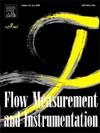Design and verification of a KNN-based vibrating mesh atomiser
IF 2.3
3区 工程技术
Q2 ENGINEERING, MECHANICAL
引用次数: 0
Abstract
Inhalation therapy in which drugs are delivered directly to targeted sites is a crucial approach for treating common respiratory diseases. As crucial devices for inhalation therapy, traditional medical nebulisers typically employ lead-containing atomizing discs that cause pollution and harm to the environment and human health during production and use. In this study, a (K,Na)NbO3 (KNN)-based micromesh nebuliser utilising lead-free KNN piezoelectric ceramic as the atomisation disc material was designed to enhance nebuliser performance through methods such as doping. We investigated the resonant frequency and mode of vibration for each order of atomisation disc vibration through finite element analysis and validated the accuracy of the developed model through comparisons with experimental results. Further validation of the microorifice theory was achieved through atomisation experiments, and the impact of the atomisation disc parameters and input signals on atomisation was analysed. Additionally, empirical formulas for the atomisation rate and pore number were derived. Under square wave pulses with a voltage of 80 V, duty cycle of 50 %, and frequency of 137 kHz, the median particle size of the atomised particles was 3.0 μm with an atomisation rate of 0.3 ml/min.
求助全文
约1分钟内获得全文
求助全文
来源期刊

Flow Measurement and Instrumentation
工程技术-工程:机械
CiteScore
4.30
自引率
13.60%
发文量
123
审稿时长
6 months
期刊介绍:
Flow Measurement and Instrumentation is dedicated to disseminating the latest research results on all aspects of flow measurement, in both closed conduits and open channels. The design of flow measurement systems involves a wide variety of multidisciplinary activities including modelling the flow sensor, the fluid flow and the sensor/fluid interactions through the use of computation techniques; the development of advanced transducer systems and their associated signal processing and the laboratory and field assessment of the overall system under ideal and disturbed conditions.
FMI is the essential forum for critical information exchange, and contributions are particularly encouraged in the following areas of interest:
Modelling: the application of mathematical and computational modelling to the interaction of fluid dynamics with flowmeters, including flowmeter behaviour, improved flowmeter design and installation problems. Application of CAD/CAE techniques to flowmeter modelling are eligible.
Design and development: the detailed design of the flowmeter head and/or signal processing aspects of novel flowmeters. Emphasis is given to papers identifying new sensor configurations, multisensor flow measurement systems, non-intrusive flow metering techniques and the application of microelectronic techniques in smart or intelligent systems.
Calibration techniques: including descriptions of new or existing calibration facilities and techniques, calibration data from different flowmeter types, and calibration intercomparison data from different laboratories.
Installation effect data: dealing with the effects of non-ideal flow conditions on flowmeters. Papers combining a theoretical understanding of flowmeter behaviour with experimental work are particularly welcome.
 求助内容:
求助内容: 应助结果提醒方式:
应助结果提醒方式:


